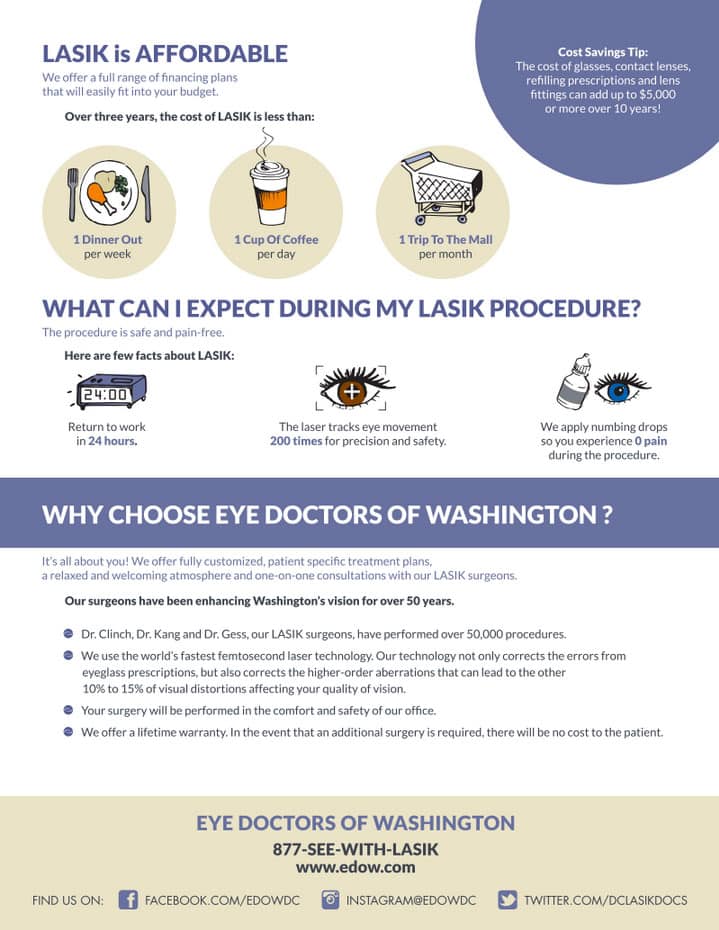What Are The Differences And Similarities In Between SMILE Eye Surgery And LASIK And PRK?
What Are The Differences And Similarities In Between SMILE Eye Surgery And LASIK And PRK?
Blog Article
Team Writer-Humphries Tang
If you have actually been thinking about SMILE eye surgical treatment, you could ask yourself how it compares to LASIK and PRK. Each procedure has its very own set of benefits and considerations. From quicker healing times to potential risks, there are key distinctions you need to be aware of prior to choosing. Recognizing these distinctions will certainly aid you make an enlightened selection that aligns with your details needs and expectations. Interested to understand more about how these procedures contrast carefully? Keep exploring to obtain a detailed understanding of SMILE, LASIK, and PRK.
SMILE Eye Surgery Overview
If you're taking into consideration SMILE eye surgical treatment, you'll find it to be a minimally invasive treatment with a quick healing time. During SMILE (Little Cut Lenticule Removal), a laser is used to create a small, specific laceration in the cornea to remove a tiny item of tissue, improving it to fix your vision. This differs from LASIK, where a flap is developed, and PRK, where the external layer of the cornea is completely gotten rid of.
Among the essential benefits of SMILE is its minimally invasive nature, resulting in a faster recovery procedure and much less discomfort post-surgery. The recuperation time for SMILE is fairly quick, with many patients experiencing improved vision within a day or 2. This makes it a preferred option for those seeking a practical and reliable vision improvement treatment. Additionally, cataract surgery anesthesia has been shown to have a reduced danger of dry eye syndrome compared to LASIK, making it a positive alternative for people concerned about this possible side effect.
Differences In Between SMILE, LASIK, and PRK
When contrasting SMILE, LASIK, and PRK eye surgical procedures, it is essential to understand the distinct techniques utilized in each procedure for vision modification.
SMILE (Little Cut Lenticule Removal) is a minimally invasive procedure that includes creating a little cut to extract a lenticule from the cornea, reshaping it to correct vision.
https://dallasxpgxt.wizzardsblog.com/26612903/changing-to-smile-instead-of-counting-on-glasses-and-calls-offers-benefits-beyond-simply-comfort (Laser-Assisted Sitting Keratomileusis) involves producing a slim flap on the cornea, using a laser to improve the underlying cells, and then repositioning the flap.
PRK (Photorefractive Keratectomy) removes the external layer of the cornea before reshaping the cells with a laser.
The major distinction depends on the method the cornea is accessed and treated. SMILE is flapless, making it a great alternative for individuals with slim corneas or those involved in contact sporting activities. LASIK offers quick visual recuperation due to the flap production, but it may present a higher threat of flap-related issues. PRK, although having a much longer recuperation period, prevents flap-related concerns entirely.
Understanding these variances is essential in selecting the most suitable procedure for your vision correction requirements.
Benefits And Drawbacks Contrast
To assess the benefits and downsides of SMILE, LASIK, and PRK eye surgeries, it's important to think about the certain advantages and prospective limitations of each treatment. SMILE surgical procedure provides the benefit of a minimally intrusive treatment, with a smaller sized laceration and potentially quicker recovery time contrasted to LASIK and PRK. It also lowers the threat of completely dry eye post-surgery, a common adverse effects of LASIK. Nevertheless, SMILE might have constraints in treating higher levels of nearsightedness or astigmatism compared to LASIK.
LASIK surgical treatment provides rapid aesthetic recuperation and marginal pain during the procedure. It's very effective in dealing with a wide range of refractive errors, consisting of myopia, hyperopia, and astigmatism. Yet, LASIK carries a threat of flap difficulties, which can affect the corneal structure.
PRK eye surgery, while not as preferred as LASIK, stays clear of developing a corneal flap, decreasing the risk of flap-related difficulties. It's suitable for individuals with thin corneas or uneven corneal surfaces. Nonetheless, PRK has a longer healing time and may involve more pain throughout the recovery procedure.
Final thought
So, when it pertains to selecting in between SMILE, LASIK, and PRK, think about it like selecting the excellent set of footwear. SMILE is like a streamlined, comfy pair of sneakers - fast and very easy.
LASIK is more like trendy high heels - showy and quick, however with some prospective threats.
PRK resembles durable treking boots - trustworthy and long lasting, but requiring a little bit more time and effort.
Inevitably, the best selection relies on your specific requirements and choices.
